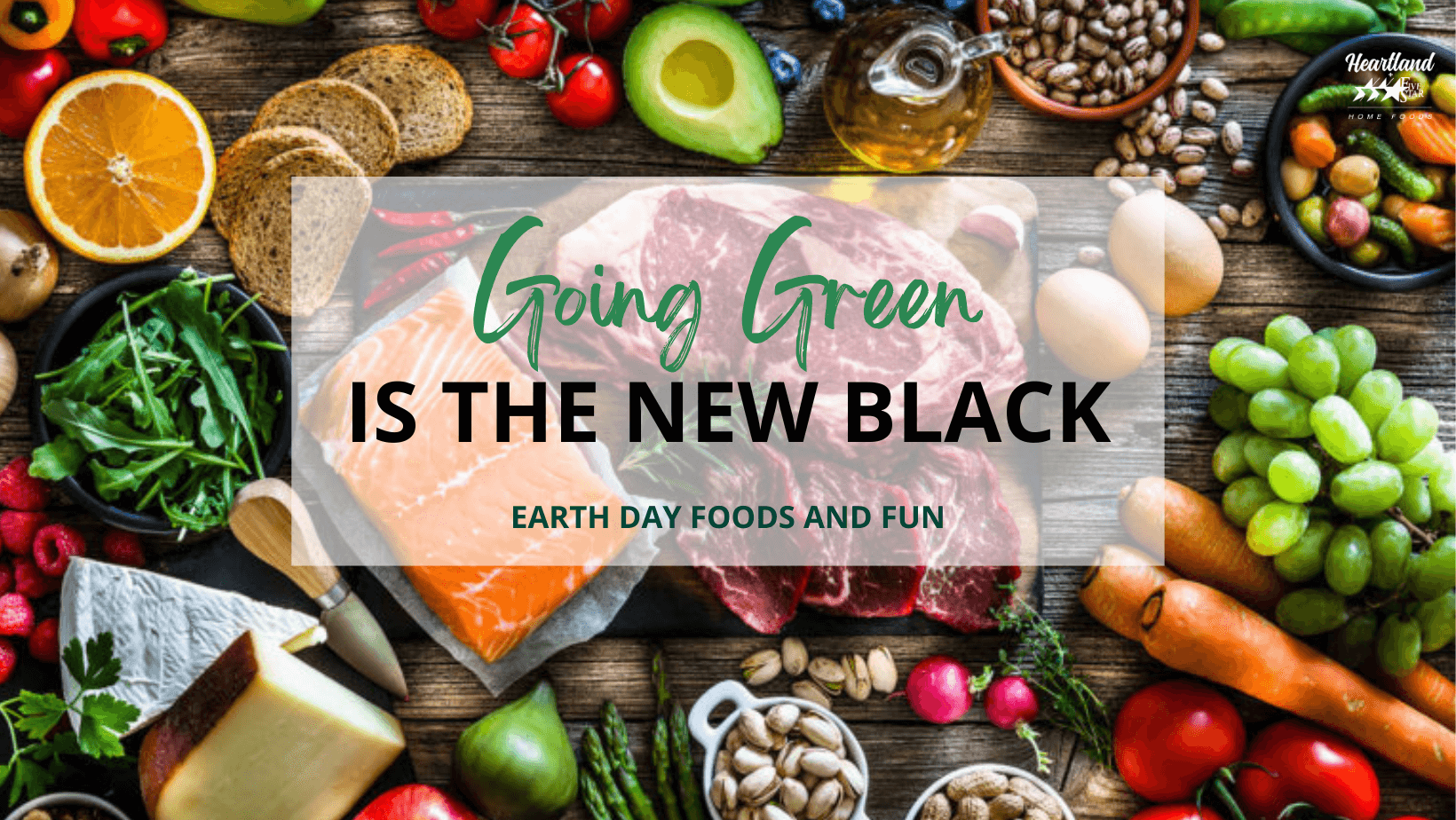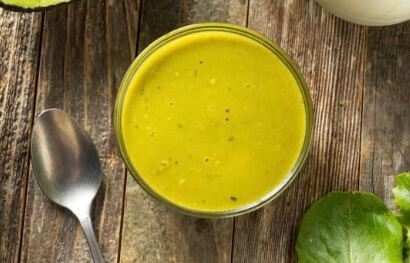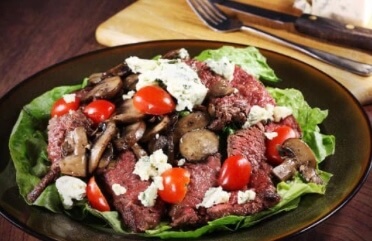~ Celebrate Earth Day in Style ~

arth Day is an annual event celebrated on April 22nd to raise awareness about environmental issues and promote sustainability. The first Earth Day was held in 1970, and it is now observed in over 190 countries around the world. Activities and events on Earth Day typically include community clean-ups, tree plantings, educational programs, and initiatives aimed at reducing waste and promoting conservation.
Earth Day is an important reminder to think about our impact on the planet and take steps towards more sustainable living. One way to do this is by choosing to consume organic, farm-to-freezer foods that are not only healthy for us but also better for the environment. In this blog post, we’ll explore the benefits of organic and farm-to-freezer foods, and provide some tips on how to celebrate Earth Day with these sustainable choices.
Earth Day is an annual event celebrated on April 22nd to raise awareness about environmental issues and promote sustainability. The first Earth Day was held in 1970, and it is now observed in over 190 countries around the world. Activities and events on Earth Day typically include community clean-ups, tree plantings, educational programs, and initiatives aimed at reducing waste and promoting conservation.
Earth Day is an important reminder to think about our impact on the planet and take steps towards more sustainable living. One way to do this is by choosing to consume organic, farm-to-freezer foods that are not only healthy for us but also better for the environment. In this blog post, we’ll explore the benefits of organic and farm-to-freezer foods, and provide some tips on how to celebrate Earth Day with these sustainable choices.
Heartland Foods – What Makes Us Earth Friendly?
We believe in the Farm-to-Freezer Lifestyle and it is our mission to bring the best of America’s farms to your freezer. Our sustainable, organic farm-to-freezer foods are made from ingredients sourced from sustainable and organic farms. Our foods are minimally processed and free from artificial preservatives, colors, and flavors. The idea behind the Farm-to-Freezer Lifestyle is to provide our customers with convenient and healthy options that support sustainable agriculture and environmentally-friendly practices. By choosing organic and sustainably produced foods, our customers can help reduce the environmental impact of food production, support local farmers and communities, and ensure that they are consuming nutritious and high-quality ingredients. Additionally, by flash-freezing these foods, they can be enjoyed year-round, reducing the need for transportation and storage, and minimizing food waste.

From Farm to Freezer: Why Choosing Organic Foods for a Healthier You and Happier Planet
Why choose organic and farm-to-freezer foods? Choosing organic and farm-to-freezer foods has a number of benefits for both consumers and the environment. Here are just a few:
- Health benefits: Organic foods are free from harmful chemicals, making them healthier for us to consume. Farm-to-freezer foods also retain their nutritional value, as they are frozen at peak ripeness.
- Better for the Environment: Organic farming practices are better for the environment, as they avoid the use of synthetic pesticides and fertilizers that can harm soil health and contribute to water pollution. Choosing farm-to-freezer foods also reduces the carbon footprint associated with transporting and storing food.
- Nutrient Dense: Organic and sustainable foods are often grown in nutrient-rich soil, making them more nutrient-dense than conventionally grown foods. They also tend to be free from harmful pesticides and chemicals that can be harmful to human health.
- Better for Animal Welfare: Organic and sustainable farming methods prioritize animal welfare, ensuring that animals are treated humanely and have access to pasture and outdoor space.
- Encourages Healthy Eating Habits: Choosing all-natural, organic, sustainable farm-to-freezer foods encourages healthy eating habits, as they are often lower in preservatives and artificial ingredients and higher in nutrients. It also supports a more sustainable and eco-friendly food system for future generations.

Earth Day Activities for the Whole Family
Celebrating Earth Day with sustainable, organic, and farm-to-freezer foods is a great way to reduce your environmental impact and support local farmers. By choosing these options, you can enjoy delicious, healthy meals while also doing your part to protect the planet.
Eco-Friendly Fun:
- Plant a tree or flowers: Help your kids connect with nature by planting a tree or some flowers in your yard, a local park, or community garden. This is a great way to teach them about the importance of caring for the environment and the role of plants in our ecosystem.
- Take a nature walk: Take a family nature walk to explore the beauty of the natural world around you. Encourage your kids to observe and identify different types of plants, animals, and insects. You can also collect leaves, rocks, or other natural items to make a collage or a nature-themed craft.
- Organize a Neighborhood Litter Pickup: Grab your kids on a litter pick-up in your neighborhood or local park. Bring gloves and trash bags and teach your kids about the importance of keeping our communities clean and free of litter.
- Reduce, reuse, recycle: Teach your kids about the three R’s – reduce, reuse, and recycle. Help them identify ways to reduce waste at home, reuse items instead of throwing them away, and recycle items that can be recycled.
- Volunteer: Find a local environmental organization or park that needs volunteers and spend the day helping out. This is a great way to teach your kids about community service and the importance of protecting the environment.
- Reduce Food Waste: Food waste is a significant contributor to greenhouse gas emissions. Plan your Earth Day meal carefully to minimize waste, and use leftovers creatively to reduce waste. Consider making a frittata or stir-fry with leftover veggies and proteins.
- Create Compost Bins: Composting is a great way to reduce food waste and create nutrient-rich soil for your garden. Consider starting a compost pile or using a compost bin for your food scraps. Composting is a great way to reduce food waste and create nutrient-rich soil for your garden. You can even use the compost to plant a vegetable garden with your kids.
Earth Day Crafts for Kids:
- Handprint Earth Craft: Paint your toddler’s hand blue and green, then have them stamp it onto a piece of paper to create a globe.
- Paper Plate Sun Catcher: Cut out the center of a paper plate and have your toddler glue pieces of tissue paper onto the plate. Hang it in a window to catch the sunlight.
Green Cuisine: A Sustainable Approach to Celebrating Earth Day
Celebrate the month of April with these bright and healthy recipes. We’ve pulled together recipes that are packed with all-natural meats and organic fruits to bring the best of Mother Nature to your table.
Here are three Earth Day recipes using all-natural meats, organic fruits, and vegetables:
DIY Seed Paper: Mix recycled paper with water and seeds to create homemade seed paper. Let your toddler decorate the paper and then plant it in a pot or garden.
Ingredients:
- 1½ cups buttermilk or plain yogurt
- 1 cup packed basil leaves
- ¼ cup packed chives
- 2 garlic cloves, peeled
- 2 anchovy filets (optional)
- 1 scallion, white and green parts
- Finely grated zest and juice of 1 lime
- 2 teaspoons coarse kosher salt
- 1 teaspoon black pepper
- 3 ½ pounds Murray’s Farm Whole Broiler Split chicken, thawed and patted dry with paper towels
- 1 to 2 tablespoons extra-virgin olive oil, for drizzling


Instructions:
- In a blender, purée buttermilk, basil, chives, garlic, anchovies (if using), scallion, lime zest and juice, salt and pepper until smooth.
- Put chicken halves in a bowl or large heavy-duty resealable plastic bag and cover with three-quarters of the Green Goddess marinade. (Save the rest to serve as a sauce.) Refrigerate for at least 6 hours or up to overnight.
- Heat oven to 500 degrees. Remove chicken from the marinade, shaking off as much liquid as possible, and lay the halves on a rimmed baking sheet. (Discard the used marinade.) Pat chicken tops dry with paper towels and drizzle with oil. Roast until cooked through, about 30 to 45 minutes.
- Let rest for 10 minutes before serving, with some of the reserved sauce if you like.
Ingredients:
- 1½ pounds Creekstone Beef Flank steak, thawed
- 6 cups organic baby spinach
- ½ cup crumbled feta cheese
- ¼ cup chopped walnuts
- ¼ cup chopped dried cranberries
- ¼ cup balsamic vinegar
- ¼ cup olive oil
- 2 garlic cloves, minced
- Salt and pepper, to taste


Instructions:
- Preheat the grill to medium-high heat.
- Season steak with salt and pepper.
- Grill steak until desired doneness is reached, about 5-7 minutes per side for medium-rare.
- Let the steak rest for 5 minutes before slicing.
- In a large bowl, whisk together balsamic vinegar, olive oil, garlic, salt, and pepper.
- Add spinach, feta cheese, walnuts, and dried cranberries to the bowl and toss to combine.
- Top salad with sliced steak and serve.
Ingredients:
- 2 cups flour
- 2 ½ teaspoons baking powder
- ½ cup sugar
- 1 cup almond milk or oat milk
- ⅓ cup applesauce
- 1 teaspoon orange zest
- 1 teaspoon vanilla extract
- 2 cups Cascadian Farm Organic Blueberries
- Pinch of salt


Instructions:
- Preheat the oven to 350 degrees F and line or grease muffin tin.
- Mix wet ingredients in a bowl (or to save on a bowl, use a 2-cup measuring cup to mix these ingredients)
- Mix dry ingredients separately.
- Combine wet and dry: Pour the wet mixture into the dry mixture and mix until just combined. Do not overmix! Add blueberries by gently folding them in.
- Spoon into muffin tins, filling each cup about ¾ full. Place in the oven (on center rack) and bake for 30 minutes.
- Let cool for a few minutes and enjoy!



